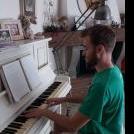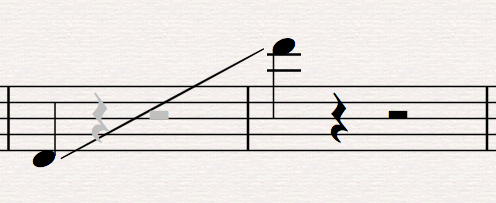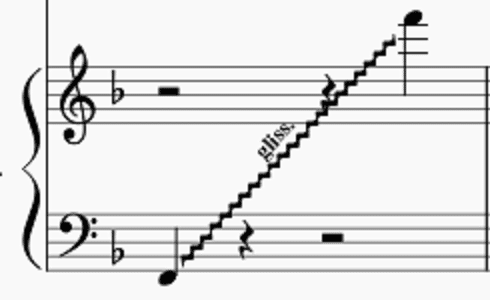Leaderboard
Popular Content
Showing content with the highest reputation on 10/05/2023 in all areas
-
Db Bach Style Piece.pdf Db Bach Style Piece.mp3 Hi everyone, This piece came to me after listening to Bach and certain sections of the piece are inspired by him, but not all. The title is just a place holder because I can't think of anything at the moment. I don't make many scores, so any comments on it (and the piece of course) would be greatly appreciated. Thank you!2 points
-
Over the past half a year or so, I have been working constantly on these pieces, it taking the highest priority out of all the projects I had been working on. Throughout these pieces, I explored and pushed the boundaries of my own style, experimenting with conventional and unconventional harmony, and attempting to embody some of the composers I most idolize. This is the first time I've ever undertaken a multi-movement project and truly experienced what it's like, and it has been such a satisfying and rewarding 6 months. I've written, rewritten, and rewritten again many of these pieces, but it's all worth it. Presenting, Obscurity.1 point
-
What a great idea to make this list. I'd heard many of these; but had also missed a bunch. Looking forward to working my way through them all! P.S. I'm a fan of Theodore's works too. He's very gifted.1 point
-
Good morning everyone, Orbs is my last composition of the summer. Symphony Orchestra, presents itself as a long adagio between post tonal, post romantic... Exceeded... As you are now used to. Here again, fragments of my manuscript illustrate the music for the Youtube video. My wife finds this composition boring, I don't know if she's right (because I'm not of this opinion, how do you want me to be objective? Especially since these Orbs giving the title are also an allusion to a problem that has just happened to me with an alteration of my left retina... Who makes me see fantastic halos before my treatment! Blinding orbs or jellyfish. Very pretty and spectacular but not necessarily reassuring!)... Good listening, then, and a thousand thanks in advance for your comments.1 point
-
@Alex Weidmann I see what you mean now. I can definitely understand the harp having rests since it's in a grand staff. But now also I can see the utility of using a glissando with rests if the glissando is meant to take a really long time to complete, because tying the note across measures to extend its length might confuse the intent of starting the glissando immediately instead of on the last note in the series of tied notes. But, since I haven't tried it, I don't know how to enter such a case into Musescore 4 and how able Musescore 4/Musesounds is to execute such instructions. I know that my original intention in this piece was to have a portamento glissando in the Piccolo, but Musescore wasn't able to play it back so I settled for a chromatic glissando, which I'm happy to say I think I'm more satisfied with than my original intention. Thanks for your contribution and sorry I am not able to answer your questions! I think, possibly "Behind Bars" by Gould might contain the answer but I don't own that book (yet! LoL). Thanks! It was a happy accident that the Tortoise and Hare's themes tempi were in a ratio of 2:1 at C allowing the Hare's theme to be played in diminution during the Tortoises' slower tempo and fitting nicely into the 2nd half of the bar. Admittedly I didn't reflect much on when I should or shouldn't double the Piccolo and Bassoon with respective string instruments, besides maybe at J when the Tortoise tires and plays its melody fragmented and an octave higher to make it seem thinner and more labored. Yes, at 63 I guess it definitely would have been overkill to double both the Piccolo and Bassoon with string instruments and I think the delicate pizzicato strings allow the wind instruments to speak better in the foreground at that part. I am very used to hearing pieces end on dominant chords without expecting a resolution I guess (did I just listen to more Beatles songs as a kid than you did or something? LoL) I also really like pieces/songs that are in mixolydian and that also doesn't demand a resolution to the respective ionian mode. Your opinions, suggestions and critiques are always appreciated! I am glad you appreciate this piece! Have you ever considered joining one of these competitions or writing your own "The Tortoise and the Hare" themed piece? I know you usually only write absolute music and prefer your listeners to make up their own minds about what your music conjures in their minds. But do you think you'd ever venture into composing programmatic music yourself? Thanks again for your review! Peter1 point
-
Hi @PeterthePapercomPoser! It's always enjoy seeing your works on here, and this one is no exception. I really liked your clever use of motives to represent each character. I particularly liked the exchange that takes place at C. I can very easily imagine the hare mocking the tortoise here. Throughout the piece there are many other "conversations" such as this that are just as effective. I have a couple of ideas for constructive feedback: I noticed a lot of the time the piccolo and bassoon are doubled in the Vln1 and Cello respectively. I think if maybe you had a few cases where they were not accompanied it would add more interesting contrast? One example would be at "C", where I think it might me more effective if the soloists were not accompanied. Another idea is at "B" to maybe have the Violins accompany the piccolo only the second time on the repeat? I'll point out that m.63 is a good example of this. The solo Bassoon accompanied by pizz. strings is a welcome contrast, so maybe try to use more of this throughout the entire piece? The ending feels unresloved, perhaps because the Ab in m.96 followed by the Bb chord at the end feels like a IV-V, preparing for a resolution to Eb? I have always thought Eb is a very triumphant chord, so it may be appropriate to use it here to symbolize the victory of the tortoise? Of course these are just my opinions, feel free to ignore if you disagree. The piece is great as it is, thanks again for sharing! -gmm1 point
-
1 point
-
Oh, thank you all, and delighted that my play arouses your curiosity. However, it is only a modest exercise in style, which I am far from daring to bring closer to the immense statue of the post-romantic god that Mahler is in my eyes (and for whom I have condemned myself since my childhood). His 10th is a symphony ghost. Only the adagio is original. The scherzo, I think, is also quite complete. But the other movements are more fragmentary (but we know that they are still quite successful for some passages). All this deserves to be checked, (I'll see what HL de la Grange says). Dying at 50 and letting us glimpse these worlds that have been open to his genius since at least the 9th or the song of the earth. 50 years may seem quite old to you, you young people, but I, who am 52, can tell you that we do not want to give up life at all and that we do not yet feel a foot in the grave, even if the health glitches are starting to annoy you. So, out of pity, don't say the obvious. It looks a bit like Malher, it's quite right, like an allusion, like a wink, but it's a hobby on my part, as we play with his electric, miniature, simplistic train, at the opposite of the demiurge world builder who is the great Gustav. I also believe that it is useless to make this precision because your ears know it. We can think of this or that composer, but everything remains in its place. Unfortunately, I can't give you an orchestral score since it doesn't exist. I usually write on 3 lines (or even sometimes 4) and then I orchestrate directly afterwards. I sometimes annotate the manuscript, for some orchestration ideas but quite often I already have the idea in mind of the desired mixtures. Here, the overall trajectory was therefore a brutal attack, like blindness, then its slow and progressive 'hemorrhagic' consequences, before letting the echo of a tonal world win, open to an already distant past. I am immersed in the reading of Thomas Mann's huge book, which is an absolute jewel of literature. No doubt, this too has contributed to some shades of what I have in mind at the moment... EDIT. At the rereading of this answer I really appear very pedantic. A thousand a thousand excuses. And again, thank you very much for listening and comments.1 point



.thumb.png.8b5b433a341551e913a34392660bc95b.png)



